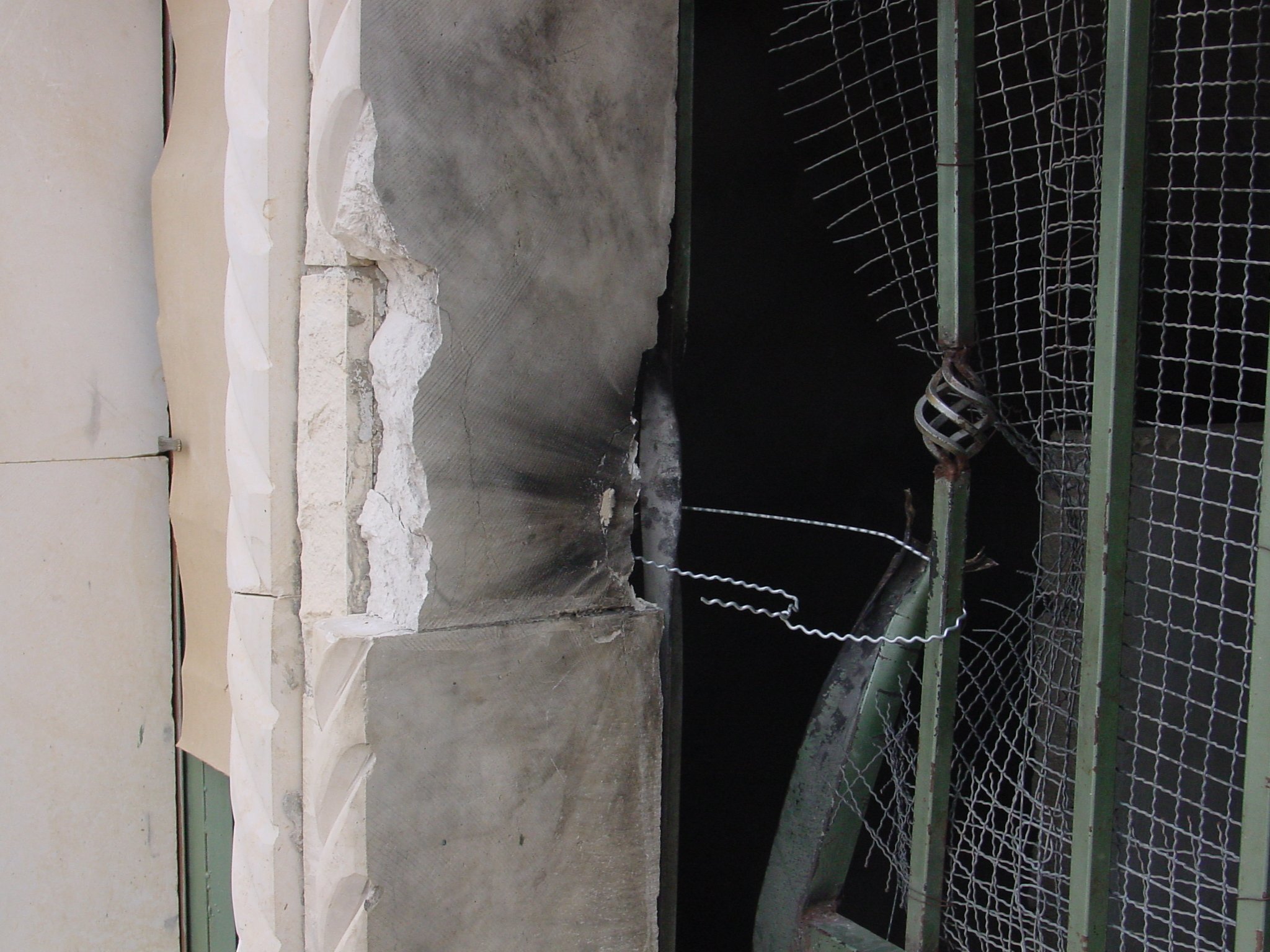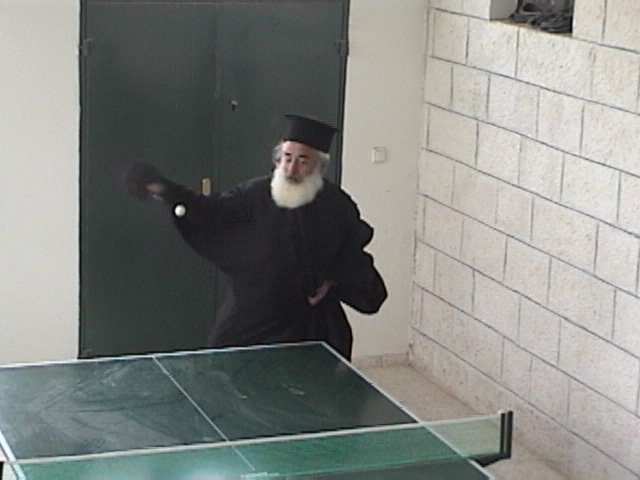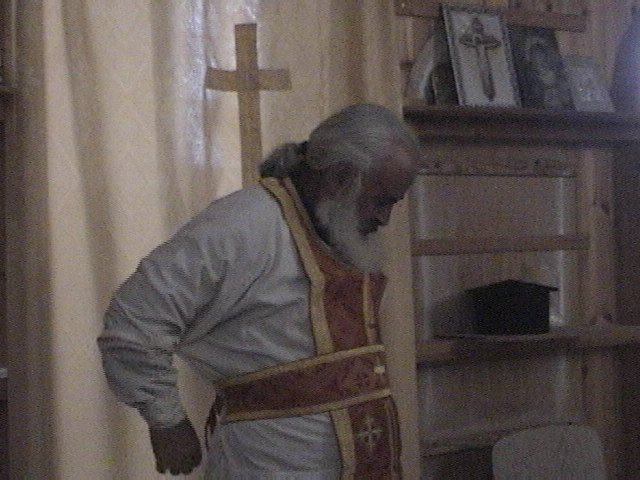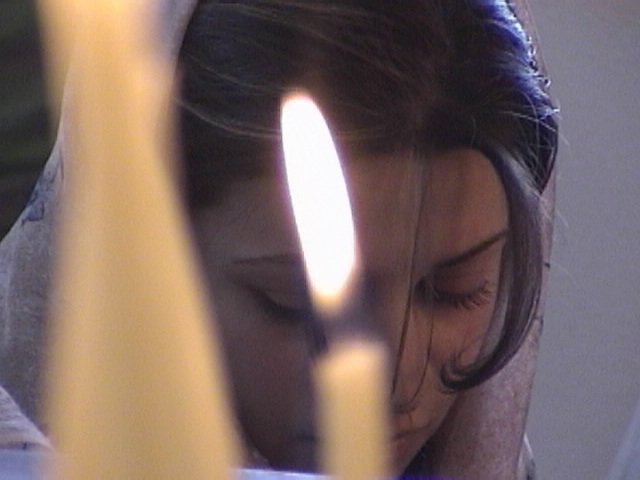September 6, 2002
At 3:30 we were awoken by a loud bang - could've been anything, really. A sonic boom (we get a lot of those, but not at 3:30 am), a tank shell (haven't been many around here, but not unheard of - the grinding of tank wheels soon after indicated this might be the case), a dynamiting of a building (never happened here, but plenty of precedent in nearby towns)...The dogs got excited soon after, which excited the roosters, and then - well, 3-4 am is not a restful time (even without explosions).
The dynamited door.
The story that eventually emerged, as we sorted through the haki fadi (gossip - lit., empty talk) and rumor, was that the Israeli army entered the village about 3:00 and went to one of our neighbor's houses looking for their son - apparently, he was part of the Jenin Camp resistance but escaped. They then dynamited the lock on the door and stormed the house, taking the son into custody. In any case, it was loud and jolting for those of us nearby.
Fr. Thomas playing ping-pong.
Marthame had an early morning anyway (but not that early), joining Father Thomas in Tubas for worship. Before he was a priest, he was a P.E. teacher in nearby 'Aqaba - he showed off some of his ping-pong skills in the church hall.
Fr. Thomas preparing for the liturgy.
One of the faithful praying in Tubas.
Fr. Thomas takes the eucharist.
For our film project, Marthame joined Fr. Thomas behind the iconostasis, filming all of the ritual that takes place back there. Orthodox services are notoriously long, and this was no exception. Staying behind the iconostasis, though, you begin to understand why. As much of the chanted liturgy is taking place among the congregation, the priest is busy preparing the eucharist. Marthame had sat behind the iconostasis before in Zababdeh and noted the many details of it: the specific prayers over each element, each liturgical garment, at each icon; the meticulous carving of the eucharistic bread representing the crucifixion, the martyrdoms, the congregational intercessions; the emergence from the "temple" of the chanted/spoken word in epistle, gospel, and homily. It is an intricate and elegant ritual, full of symbolism (e.g. the gold piece that stands over the plate which Marthame thought simply a practical item to hold cloth over the plate without touching the bread is actually a representation of the manger). As Fr. Thomas put on his liturgical clothing Marthame couldn't help but notice the similarity of his dress to that of a butcher before the slaughter - the sacrifice of the lamb of God re-enacted?
In the midst of this, something of great historic importance happened (which we can't discuss publicly for another 1000 years).
The buzz in the congregation was about damage to the Greek Orthodox Convent at Jacob's Well due to Israeli fire - damage of the entrance or something. It's been a long time since we've been able to get down to Nablus with its constant curfew - we hope we can do that soon to reconnect with friends there.
In the evening, the Catholic clergy (three Rosary Sisters, two Deacons, and a priest who was born in Jordan - to be sung to the tune of "Twelve Days of Christmas") visited with Fr. Thomas, Marthame boldly representing the Protestant tradition in the ecumenical gathering.





